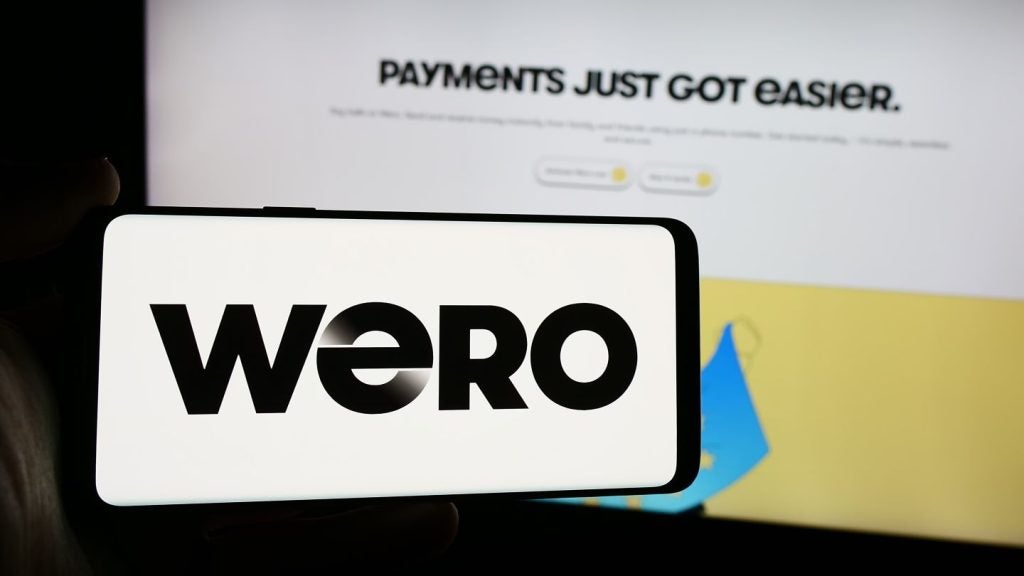With the year coming to a close, EPI has asked industry experts to share their predictions for 2015. With many excited for the cascade of change just around the corner, it remains to be seen what will make its mark in the upcoming year and what will be left behind
How will the online payments industry develop in 2015? (Tobias Schreyer, Co-Founder of the PPRO Group)
I believe that 2015 will continue our ascent into a cashless society, with a further decline in conventional retail banking. Digital services such as e-money accounts with linked debit and prepaid cards are quickly emerging as popular traditional banking alternatives, not just in the UK, but around Europe and the rest of the world.
The knock-on effect from this will result in a major shift in 2015 from current favoured online payment methods like debit/credit cards and PayPal, to a broader set of online and mobile payment options that not only accommodate changes in the UK banking market, but also utilises payment preferences from consumers beyond UK shores looking to purchase goods from British retailers.
With consumers constantly looking for increased speed and ease of use, they will gradually turn to e-money accounts, which offer the benefits of a traditional bank account with the addition of increased privacy, reduced charges, faster responses and improved consumer interfaces.
As the payment landscape continues to heat up, e-money accounts with linked prepaid cards have evolved and will continue to encapsulate a new market of prospective users. Prepaid cards are becoming an important asset to the average consumer, proving to be a useful alternative to traditional credit or debit cards. For some, they ensure their money is budgeted more wisely and for others, businesses and consumers alike, it has become a secure alternative for making wage transfers and for allocating employees with company cards.
This signals change for traditional banking methods, as consumers increasingly move to online funds management; the need for personal interaction has been removed, thus accelerating the decline in bank branches. Conventional banking methods will in turn become redundant, with e-money accounts and prepaid cards shaping the payment market place of the future.
Five integrated predictions for an integrated payments landscape in 2015 (Bethan Cowper, Head of International Marketing,Compass Plus)
The payments industry has never been more exciting. 2014 saw the proliferation of smartphone adoption across the globe, the move towards a more personalised customer journey and the development of a much more comprehensive omni-channel experience. With more payments channels available than ever before, the industry is moving towards an era driven by consumer choice and the gap between the more static financial institutions and those who are driving the evolution of payments is widening.
Looking back on previous years’ predictions, the industry universally agrees that it was the year of the mobile or big data or some such technology. Year-on-year they are wrong. 2015 isn’t the dawn of a new age of electronic payments; branches won’t die, cash will live on and no singular channel will become king. Payments have evolved to offer greater choice and as such, consumers are increasingly aware of and use different channels and methods to make transactions. 2015 will establish the growth of the multi-channel, omni-channel consumer and this will be the driver of the adoption of newer technologies such as contactless/NFC and mobile payments.
To be successful in this option-led environment, financial institutions must invest in the technology to support their activities: gone are the days of siloed product strategies and the "one channel" consumer; as are the days of technology "plasters" or wraps and short-term solutions. According to Ovum, more than two thirds of financial institutions are looking to modernise their payments infrastructure in 2015 and this is undoubtedly motivated by the need to remain competitive amongst newer and more nimble players.
High profile system crashes and security breaches made headlines on numerous occasions in 2014.
To ensure customer retention and expansion, financial institutions will have to balance the need for security with user convenience and transparency around their choices. Using staff to educate customers will help build, and in some cases, re-establish trust. As such, in this increasingly consumer-led industry, financial institutions will use loyalty incentives to drive consumer behaviour and to differentiate their service in 2015.
In summary, 2015 will be the year that:
- Transactions will be made utilising a wider array of channels
- Increased adoption of newer payment technologies such as the mobile
- The need for a payments infrastructure refresh including increased expenditure on security
- Consumer education to instill trust
- Loyalty programmes will be used more effectively to reward and engineer customer behaviour.
Mobile Payments in 2015: Another Growth Year (Bernardo Nicoletti, Author of Mobile Banking, Transigma)
Mobile Payments will grow in a faster way in 2015, essentially for three reasons:
- The launch of mobile wallets.
- The spreading of the NFC technology and the launch of wearable devices.
- The diffusion of P2P (Person to Person) payments solution
The Mobey Forum defines a Mobile Wallet as a function on a mobile device that can securely interact with digitized valuables. Often it is understood as a means for micropayments, an equivalent of prepaid card. A mobile wallet can contain, generate, and facilitate multiple functions:
- Financial, such as Financial transaction options (money send/transfer, bill payment, cash-in or cash-out, wealth management, stock exchange investments);
- Identity, such as Access control (physical or digital) via log-on credentials;
- Mobile Commerce or m-Commerce: Mobile commerce is any transaction, involving the transfer of ownership or rights to use goods and services, which is initiated and/or completed by using mobile devices
We expect that in 2015 there will be multiple mobile wallet launches, often in a partnership business model. For instance in the United Arab Emirates, the Bank Association will launch a mobile wallet in 2015 in common with all the Dubai banks. SIA-SSB will do something similar in cooperation with a number of Italian banks.
Contactless technology will also receive a big boost in 2015, mainly thanks to the launch of the iPhone 6 and Apple Pay. This mobile payment service lets certain Apple mobile devices make payments at retail and online checkout. It aims to digitise and replace the credit or debit magnetic stripe card transaction at card terminals. These Apple services and devices let the latter wirelessly communicate with point of sale systems using NFC, a "dedicated chip that stores encrypted payment information" (known as the Secure Element) and Apple’s Touch ID and Passbook.
Another interesting development in 2015 will be the launch of wearable mobile payments devices, for instance smart watches. For example, users with some iPhone models can use Apple Pay through an Apple Watch, though the watch lacks the added Touch ID security. For added security, the watch’s sensors can ensure that it is still being worn by its owner. If the watch is removed at any point, then Apple Pay is disabled.
P2P Payments will be another big hit for 2015. Person-to-person payments (P2P) are an online technology that allows customers to transfer funds from their bank account or credit card to another individual’s account via the Internet or a mobile phone. The most successful case in the past has been M-Pesa. Launched by Safaricom in Kenya, it has since expanded to Afghanistan, South Africa, India, and in 2014, to Eastern Europe. M-Pesa allows users with a national ID card or passport to deposit, withdraw, and transfer money easily with a mobile device. Now P2P is gaining a foothold in Western Europe too. Barclays launched a very successful Pingit P2P solution, which allows also some international payments. Paym is a similar program that will expand substantially in 2015 thanks to the support of a large number of banks, with HSBC among them.
Trends and forecasts for 2015 on the Retail Banking market (Howard Berg, Senior Vice President, Gemalto)
2014 was an interesting year for the retail banking industry, but, as we near 2015, it’s clear that there are more interesting changes afoot.
The rise and adoption of new technologies in daily life is dramatically and irreversibly changing the landscape of retail banking. Banking customers are becoming increasingly self-directed, and expect their banks to deliver convenient, yet secure, ways to pay, manage their accounts, conduct simple operations and interact online to offer these services on all their mobile devices 24/7.
For banking players, this digitization comes with an imperative of cost reduction, while a serious cross-industry battle is happening for the positioning in digital payment services with non-banking players and, ultimately, for consumers digital identity and security gatekeeper.
More banks go digital
This digitisation effort is very visible around the automation of banking services and fulfilment of payment devices, as well as the transfer of these services on the digital channels (phones, tablets, and computers).
While there will be a reward for those banks embracing the move to digitised processes (mostly on operational cost cuts), a risk of seeing customers adopt new digital services from other providers than their primary is well identified for those who are slow to respond to changing customer demands. In this context, "main street" banks’ role would be significantly diminished and value would migrate to more innovative and efficient providers.
While major banks have already started this digital transformation process and will continue on this path, we expect to see this trend extend to the bulk of other banks in 2015.
On-boarding new customers expands versus traditional branch services
2015 will see traditional branch banking lose ground to online on-boarding. In addition, we also expect to see an extension of eBanking services such as loan contracts and account openings, resulting in an increasing need to authenticate the applicants and secure the transactions. All this needs to be provided in a "seamless" manner with the digital channels being integrated across the various product lines, and, ultimately, the bank acting as an aggregator of services.
The battle for payments intensifies
Payments are, amongst all banking services, the services generating the most frequent and sensitive touch points between banks and customers.
Banks are the traditional incumbent players in the payment industry, but they are under increasing pressure from new non-banking players with innovative and convenient value propositions, challenging their prevalent position and redefining some of the revenue streams.
To counter these new competitors, 2015 will see banks put together comprehensive offers relying on a variety of payment means, from traditional cards to cross-channel digital payment propositions.
The contactless wave will accelerate
Most of the cards issued in China this year and next year are dual interface cards, and in many countries, these now outnumber traditional ‘contact only’ cards.
This massive deployment and adoption of contactless technology has paved the way for other ‘form factors’ (including the mobile hosted payment applications) and the emergence of payment through wearable technologies. As NFC continues to become more mainstream and new wearable devices come to market 2015 will be the year that more payments start to be made in this way.
NFC Mobile in-store payment will take off
2015 might eventually be the year when NFC mobile proximity payments take off, in the wake of Apple Pay and HCE announcements this year. It’s clear that people are still getting to grips with the technology as research from InfoScout reveals highlighting that 95% of iPhone 6 users with Apple Pay either weren’t aware they had it or didn’t use it. However, as Apple helps make NFC payments more mainstream, the industry expects this to change quite dramatically in 2015.
We also expect more new initiatives will be revealed that will start to merge in-store payments and online cloud-based payments delivering a more consistent customer experience.
Mobile Banking and mobile commerce value propositions will become richer
As people become more tech savvy and user expectations increase – digital natives are starting to demand the same functionality across all their mobile platforms, with an equivalent level of usability and security as on traditional online channels. New services will also be added to the shoppers experience thanks to the interaction of geolocalisation capabilities on the mobile within the store premises.
Maintaining security as a pre-requisite
Security is the foundation of trust, necessary to foster the adoption of these digital banking services. In an increasingly complex ecosystem, security solutions will have to adapt without hindering the user’s convenience in their service experience.
Furthermore, tokenisation, biometrics, diverse secure elements and trusted environments will be combined to offer the best trade-off between usability and security of sensitive data.
As you can see there is a lot going on the retail banking space and 2015 is set to be an extremely interesting year. It will be interesting to look back next year and see how each of these progress but far and away the most exciting trends have to be around universal EMV adoption and new innovative ways of enabling NFC and mobile payments through new forms of wearable technology.
Which Technology Trends will be key for Financial Institutions in 2015? (Stephen Keenan, Managing Director UK & Ireland, Verizon Enterprise Solutions)
As the end of the year approaches and enterprises take stock of their business priorities for 2015, many are looking to new technologies to help shape and strengthen their business momentum.
We see strategic network investments becoming a major focus point for savvy CIOs in 2015, as companies seek to make sense of big data, transition to the cloud and monetise the Internet of Things (IoT). Enterprise organisations will also adopt technologies that drive business innovation and provide a strong platform for future growth.
Financial institutions specifically will see themselves driven by three major market factors, which will influence their take-up of these supporting technologies in order to provide market-advantage. These are:
- Constant need to achieve operational flexibility and agility: Proliferation of omnichannel banking, demand for greater cost efficiencies and the threat of non-traditional competition will compel this requirement as we move into 2015. The growing demands of data, cloud, video and mobile solutions require enterprise networks to become more agile and scalable, without compromising performance. CIOs must ensure their networks are capable of distributing increasing workloads among multiple data centres as applications move to the cloud. Leveraging technology innovation including virtualisation, automation and optical network technology (100G, 200G and LTE), to improve network efficiency and reliability, will be critical in enabling networks to handle massive growth.
- Changing demographics: A constant increasing population and disparate consumer ages will continue to drive the need for tailored services to cater for the entire age spectrum. Attracting, retaining and growing customers will require new or improved products and services aligned to each demographic, macroeconomic and regulatory change. Data — the ability to gather it, manage it and make sense of it — will enhance business performance and impact how organisations act and live. Harnessing big data for unprecedented insights into how products and services are being received and how assets are being used will be a key priority for the C-suite in 2015. Companies that integrate advanced and predictive analytics programs into their connected infrastructure will be best positioned to improve operational efficiencies, identify new revenue streams and better serve their customers in the data economy.
- Secure data + protect brand = engender trust: The ever-constant threat of cyber-attacks means that security should always remain on the CIO’s agenda from holistic security solutions, ongoing compliancy requirements and the need for transparency. Device proliferation, machine-to-machine connections, an increasingly complex threat landscape and extended computing environments will make network security more complex — and more important — than ever in 2015. A holistic, integrated, multi-layer security strategy will be critical for mitigating risk and establishing trust between devices, networks, people and systems. But what will be even more important is the adoption of a proactive risk management strategy aimed at detecting crimes — quickly and efficiently — using advanced big data analytics. This will be a make or break proposition for enterprises safeguarding their data in the coming year.
We believe organisations should focus on connecting technology innovation on a global scale. Many organisations understand the potential of the Cloud, or the Internet of Things, but realise that these technologies cannot be viewed in isolation. Rather, they must be fully embedded into global business operations if their potential is to be realised. We’ll see CIOs refocus on the fundamentals in 2015, securely embedding innovation in their global network in order to make sense of big data outputs and fuel business growth.
Richard Moulds, Vice President of Strategy (Thales e-Security)
Biometric technology opens up a host of new possibilities – unlike passwords, biometric credentials can’t be easily guessed or shared among users and the technology generally offers a better user experience. Users hate remembering passwords and carrying tokens around – anything that is more convenient has a big advantage. Traditional hardware authentication devices such as one-time-password (OTP) tokens and smartcards tend to be very costly for organisations and are hard to manage, whereas biometrics are tantalizingly close to being usable features on the user’s own smart phone, making it a much cheaper option in the corporate setting.
However, with biometrics you have a finite number of ‘tokens’ – you only have ten fingerprints! Whilst this finite number might be sufficient for personal use, in the workplace IDs and credentials are constantly changing as systems and personnel come and go and security requirements change. Every time you revoke a biometric ‘token’ the user has fewer ‘tokens’ left. The other snag is that biometrics are analogue. Sometimes matching can be a bit hit and miss, creating a grey area of false positives and negatives. This means there is always a need for a fall-back system otherwise users will be locked out of their own accounts. In most cases, this means there is still a password based back door – which some would argue defeats the whole purpose of biometrics.
The advent of consumer technology such as TouchID on the iPhone and its role in Apple Pay could be the technology which takes biometrics to the mass market – it’s not very common for consumer security to drive corporate IT strategies but phone based biometrics might just be the exception.
The ubiquitous ‘buy’ button and the journey of authentication
It seems that everyone wants to be a payment processor or at least a payment initiator. Social media sites such as Facebook and Twitter have trailed ‘buy’ buttons embedded directly in ads that they host. The idea is that consumers will favour impulse purchases that don’t require you to leave your friends, even for a second. Advertisers like it because it links social media campaigning directly to revenue rather than just ‘likes’ and followers.
But there’s an obvious security and trust issue here. Even if we accept that these types of web sites have sufficient security to protect stored credit cards, which might be a stretch given their track record in protecting passwords, there is the even bigger issue of authentication. Let’s be honest, people check social media sites very often – maybe hundreds of time a day. Passwords and credentials are nearly always cached, are frequently federated to other sites and are often as ‘skinny’ as users can get away with – who types in a complex 16 digital code to access their wall? Yet these same credentials might now enable a payment – that’s quite scary. Predicting the death of the password is a perennial favourite that will probably never happen. What seems more likely is that the password will become the start of the ‘authentication journey’ rather than definitive go/no-go.
Risk based authentication or adaptive authentication ratchets up as the user seeks to do more ‘risky’ things, like make a payment. The site will use a host of other information to decide whether to approve users to go to the next level of trust. Authentication will move from being an event to being a process – a dynamic, multi-stage activity.
Web sites, and social media sites in particular have a wealth of behavioural data, they know how you browse what interests you and who you interact with. They also have a good idea of where in the world you are. All of this data coupled with other challenge and response questions provide a way to ratchet up trust. Of course the risk is that this opens up a whole new world of ID theft where hackers don’t just try to steal your passwords, but they try to mimic your lifestyle or shopping habits – which is perhaps even more scary.
Should we all start modifying our behaviour in order to give ourselves the best possible behavioural profile, try to do things the same every day so as not to upset the analytics machine, worry about doing something out of the ordinary in fear of being mistaken for an attacker and having our accounts suspended? Time will tell if this approach can work at scale or whether once again convenience will trump security and the password’s lease of life will be extended yet further.







